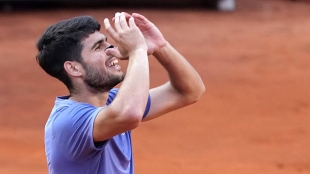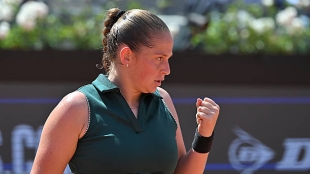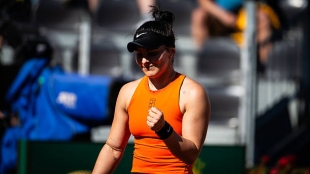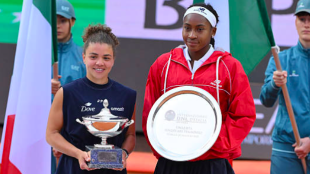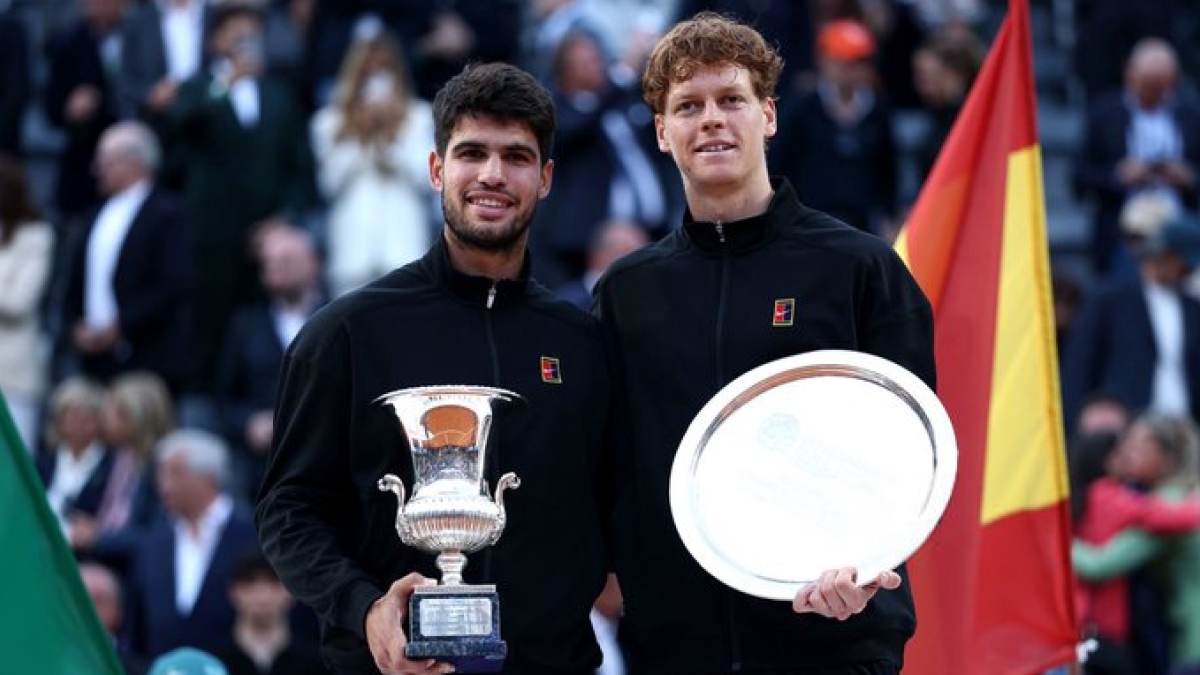
He said yesterday, after lifting the title, that it had been his best match tactically. Carlos Alcaraz was not mistaken. Just when he had to step up and show his best version, he did so. The Murcian tactically dominated Jannik Sinner, who either couldn't or wasn't allowed to display his tennis, and ended up running out of time, wishing the match would end as soon as possible. The first of the battles they will face this year fell in favor of Carlitos, who was impeccable.
He and his team executed this final perfectly. They knew what they had to do and exploited Sinner's weaknesses to the fullest, as well as the possibilities that clay courts offer. Much credit goes to Ferrero for how strategically he planned this final, and especially to Carlitos who never deviated from the path set. Just as he is criticized for mentally drifting away from matches, against Sinner, he remained focused throughout without a single slip-up. With this in mind, it's no surprise we saw the outcome that we did.
First set: a game-changing moment
In the opening set, we see an initial period of sizing each other up. This is characterized by both players showcasing their strong first serves while struggling on the return. There were several games held to love with very few break opportunities. Just when it seemed a tiebreak was imminent, we reached the game-changing moment. Jannik raised his level while returning, reaching 15-40, with two chances to win the set.
Faced with this initial match tension, Alcaraz remained composed and saved both break points. The first with a good first serve, and the second with an unforced error from Jannik on his backhand, which he would later regret. From that point on, the Italian crumbled and never recovered. While converting that second break opportunity could have altered the outcome, given how the match was tactically structured, it was likely only a matter of time before Alcaraz tilted the balance in his favor.
Carlos showcased excellent serving throughout the match. His tactic was clear: with the first serve, he went wide or to the body, and with the second, he aimed for the backhand. The main goal was to create angles, force Sinner out of position to exploit the gaps left open. By serving to Sinner's backhand, he aimed to prompt a short reply to attack from a central position. Overall, Carlos outperformed Sinner in serving, a noteworthy accomplishment given their respective histories.
Second set: Alcaraz excels in defense
Two critical points in the second set underline the 6-1 scoreline in favor of Alcaraz. Sinner's serving level plummeted drastically, while Carlos demonstrated exceptional defensive skills. In this set, the Italian managed only three first serves. Yes, you read that correctly, just three first serves. Of those three, he won only one point. Winning just one point on first serves throughout a set explains the marked performance gap between the two players.
Furthermore, Alcaraz was unmatched in his defensive play on the forehand side. He hit 81% of his shots with the forehand in this set, achieving an impressive 11/12 record in points defended. When in a defensive position, he effectively turned the tide by absorbing high-paced shots to launch his counterattacks. Additionally, he clocked a forehand speed of 127km/h. Phenomenal.
As highlighted by our colleagues at Tennis Insights and TDI Data for the ATP, Carlos elevated his defensive game to win 46% of points from a defensive position, nearly twice as much as Sinner who managed only 24%, significantly below his average over the last year.

During play, Alcaraz aimed to direct the ball to the cross-court forehand area to unleash more forehand shots compared to backhands. Conversely, Sinner's game plan was quite the opposite. The final result indicates a clear advantage for the Spanish player, who connected 111 forehands to just 97 backhands compared to Jannik's 105 forehands and 90 backhands. The contrast is striking, with the Italian unable to steer the match into a backhand-to-backhand exchange.
In overall performance ratings, Tennis Insights shows that Sinner did not outperform Alcaraz in any aspect. He was expected to excel in serve and backhand, areas where he traditionally shines over Carlos. While it may have been predicted that he would struggle in return and forehand, the reality is that the Italian was outperformed in every aspect by his main rival. If Alcaraz can conclude a match hitting backhands better than Sinner, little else needs to be said. The scenario is quite clear.

With these outcomes, Alcaraz proved that both he and his team excel in devising strategies that unsettle Sinner. Additionally, the Spanish player possesses various tactics to execute his game plan successfully. Being the first to strike, it remains to be seen how Jannik and his team will attempt to turn the tide should they meet again at Roland Garros. The intriguing aspect of this rivalry is akin to a chess match between Alcaraz and Sinner. Now, we await the next move from both sides.
This news is an automatic translation. You can read the original news, La clave táctica que ejecutó Alcaraz para aplastar a Sinner



